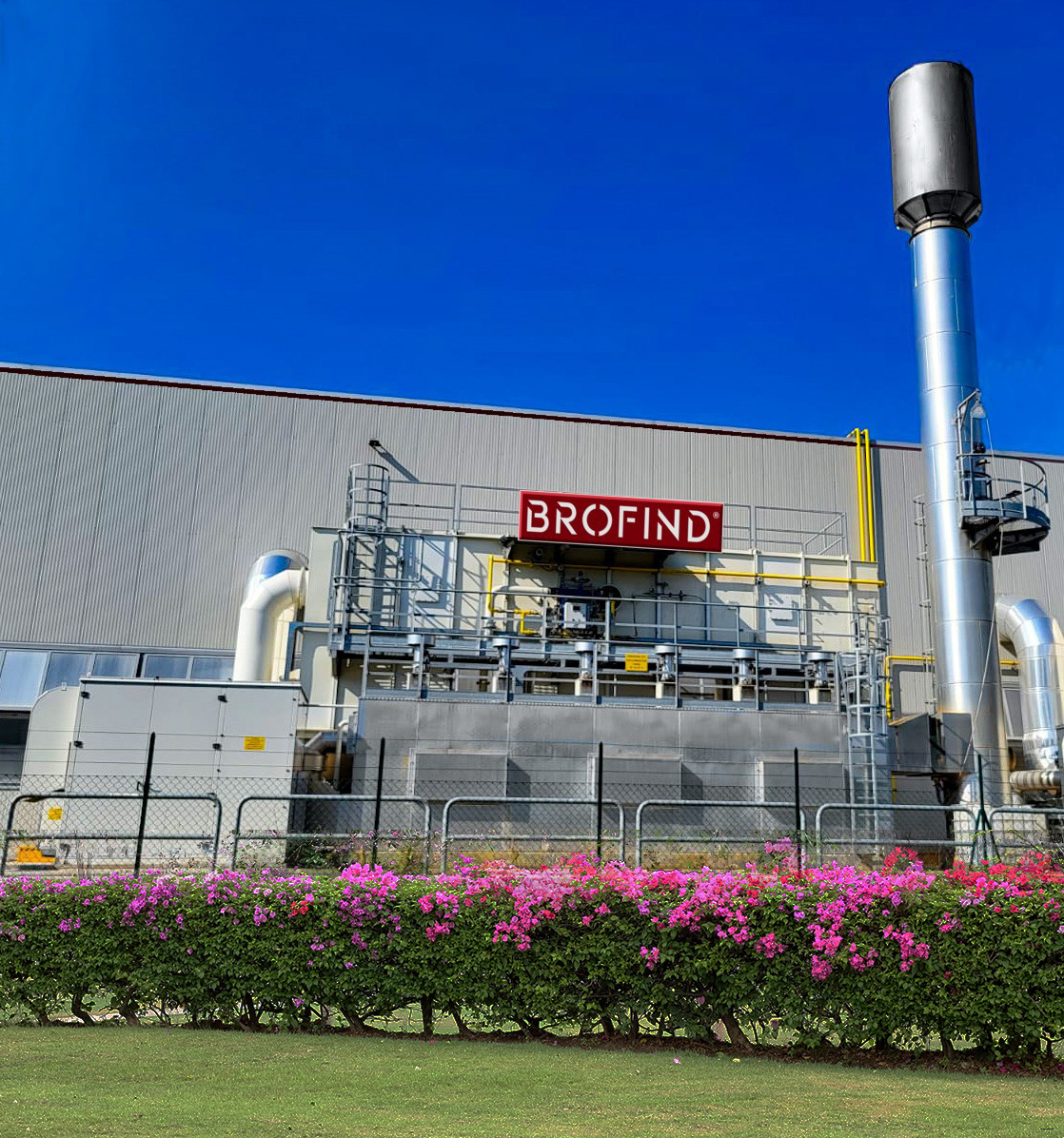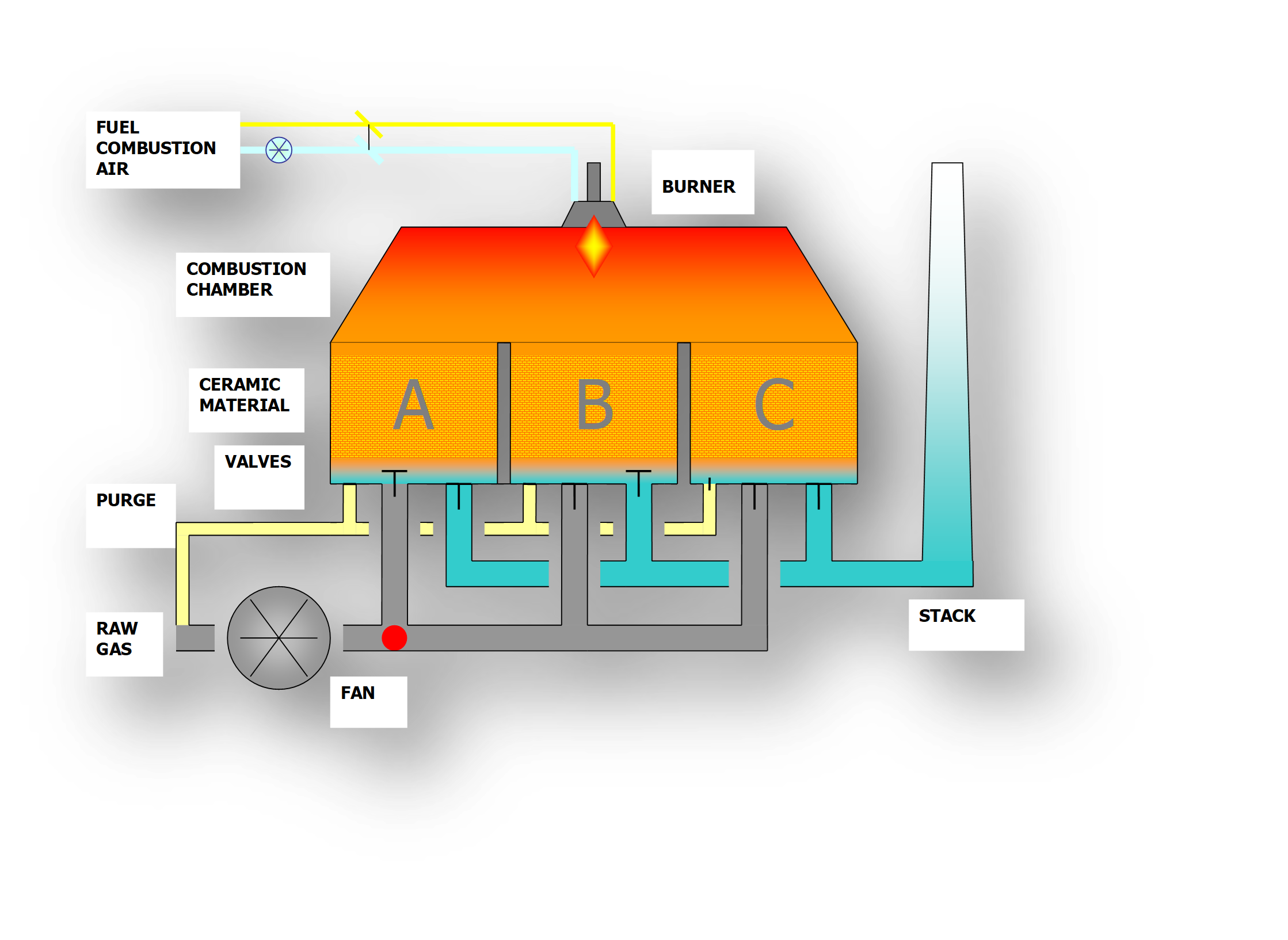THE FIELD OF CERAMIC INDUSTRY FORESEES A DIGITAL PRINTING METHOD TO APPLY COLORS, IMAGES OR DRAWINGS TO THE SURFACES OF TILES OR OF BIGGER SLABS, THUS OBTAINING HIGH QUALITY AND RESISTANCE ON WASHABLE SURFACES THAT UNDERGO HEAVY CHEMICAL AND MECHANICAL STRESS.

Environmental impact of ceramic digital printing industry
Color application is performed using an organic carrier that – during the following firing – turns into substances characterized by a low olfactory threshold. These substances are then released through the ovens’ atmospheric emissions, often causing odorous issues in the surrounding area.
EMISSIONS CHARACTERISTICS
Atmospheric emissions coming from ceramic material digital printing have the following characteristics:
| VARIABLE | CHARACTERISTICS |
|---|---|
|
Temperatures |
Average high, between 140 and 200°C |
| Presence of volatile organic compounds (V.O.C.) |
Aldehydes in particular – characterized by a high odorous charge |
| Presence of inorganic compounds |
Hydrochloric and fluorhydric acid, sulphur dioxide, ammonia and carbon monoxide |
| Presence of inorganic dusts |
Originated from the processes of dry neutralization of the above-described inorganic acids |
|
Humidity |
High |
|
Metals |
Present |
| Operational cycle |
Both during the day and the night, for the whole duration of ovens operation |
DEPURATION GOALS
Depuration goals are mainly to reduce the odorous impact of the emissions in the atmosphere as much as possible, respecting the foreseen limits for each pollutant without creating secondary pollutants and with capital and handling costs that are acceptable for the production process.
THE SOLUTION THROUGH THE REGENERATIVE THERMAL OXIDATION PROCESS
Different possible solutions have been evaluated to solve the environmental issue – which in some instances has caused concern for the nearby population. The options considered solutions both upstream the production processes – therefore intervening on the formulation of the inks used in the printing process – and downstream, adding an air depuration plant.
In this last case, the regenerative thermal oxidation technology has proved to be particularly effective.

Regenerative thermal oxidation is a chemical process that allows – with high temperature and the oxygen normally contained in the emissions – the transformation of organic pollutants into sub-products with reduced environmental impact: water and carbon dioxide.
Since the conversion needs a temperature up to 800-900°C, we foresee a particularly efficient energy recovery which – thanks to the use of specific ceramic filling materials – can limit operating costs bound to the use of auxiliary fuel feeding a dedicated burner.
CONSIDERATIONS FOR THE APPLICATION IN THE CERAMIC INDUSTRY
Regenerative thermal oxidation is a frequently used process for treating atmospheric emissions containing V.O.C. and released by different industrial productive processes.
The application in the ceramic industry had to foresee specific aspects, aimed at reaching the following goals:
- Achievement of the highest depuration performances, despite the presence of many pollutants of different origin and chemical composition, by means both of a specific dimensioning of process parameters and of the application of state-of-the-art emissions containment systems
- Optimization of energetic consumptions, thanks to the installation of state-of-the-art technologies oriented to energy recovery
- The capacity of resisting to any fouling or clogging caused by the presence of inorganic dusts and anyway facilitating cleaning operations
- Easy maintenances, through the design of a layout specifically studied to allow simple and safe maintenance interventions, also reducing plant stops
- Plant durability, using materials and components that can withstand the presence of corrosive agents
- The possibility to quickly replace those plant components that are deteriorated due to the demanding operating conditions typical of this activity
THE RESULTS
The results obtained applying this technology in numerous applications already installed and that have been operating for quite some time confirm the quality of the solution.
Here are the results:
- The disappearance of olfactive issues and of the resulting effects on the surrounding environment
- Pollutant concentration values that are way lower than the ones foreseen by law
- The lack of organic micropollutants
- Reduced handling costs
- Simpler ordinary and extraordinary maintenance operations
- No interference with the productive processes upstream the depuration plant
- All the advantages of a plant complying with the requirements of industry 4.0